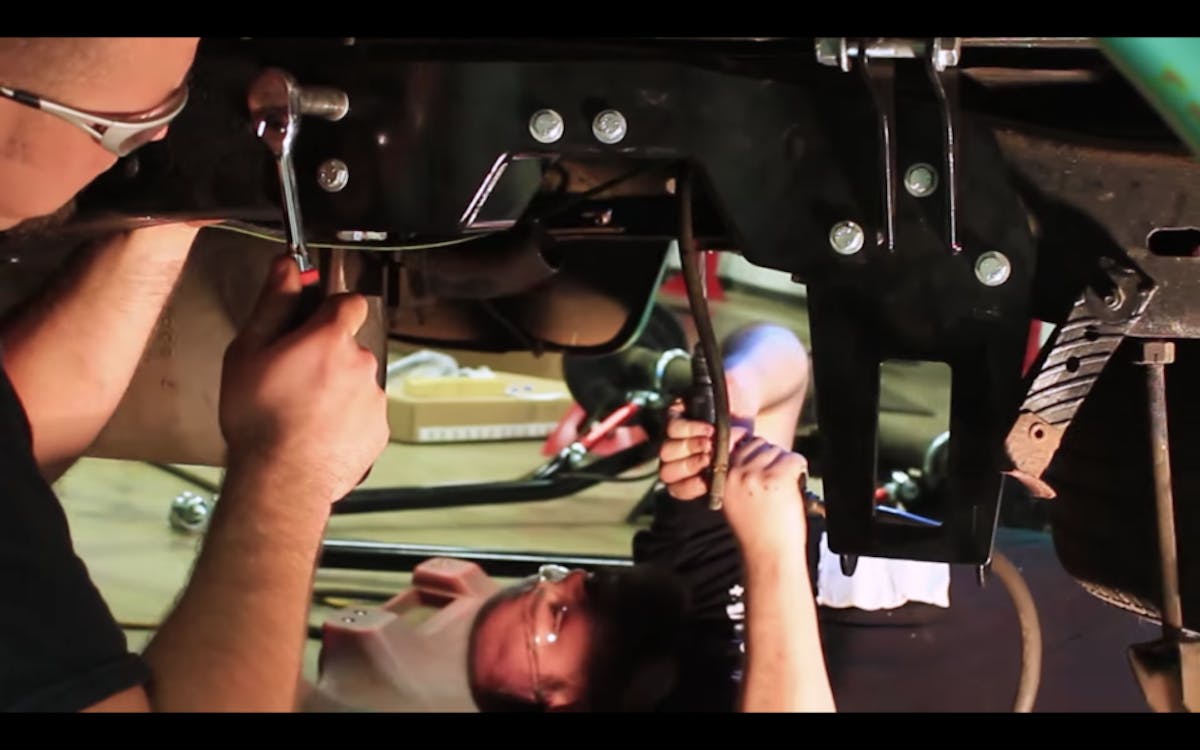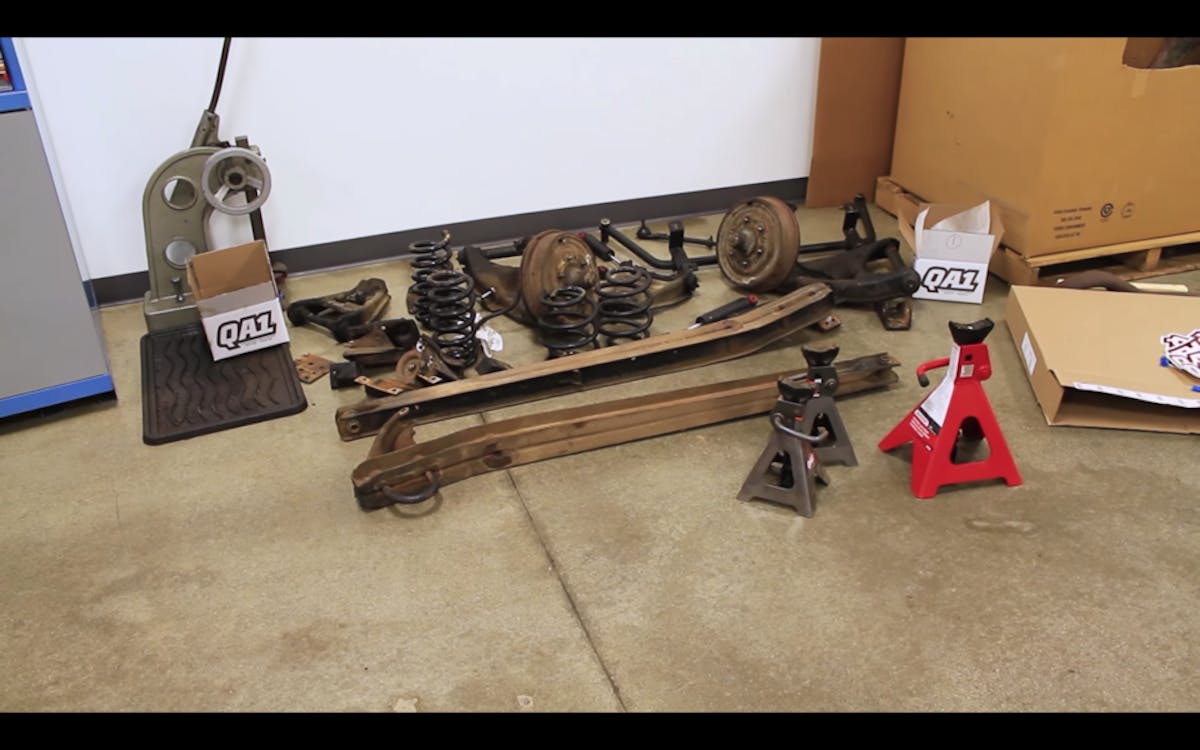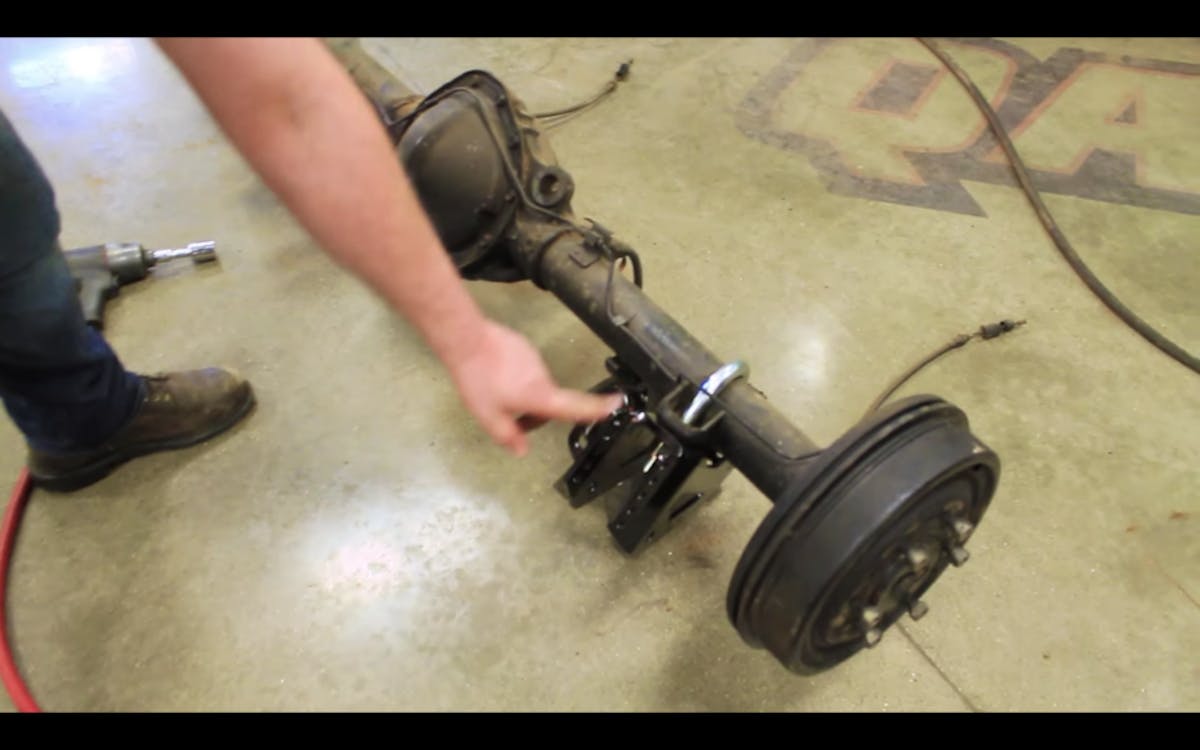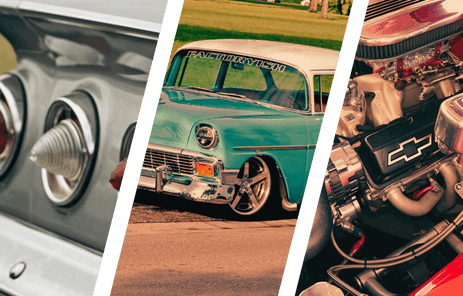The last time we heard from QA1, Bill and Damien installed the front suspension in this ’66 C10 pickup. If you didn’t see that video yet, here is a link to our article on it. As part of the soon-to-be, three-part series, this second video shows them installing the rear suspension in that same truck. This is a cool series that shows a complete overhaul of the suspension system on a ’66 C10. This is just an example for their line of suspensions that are compatible with the ’63 through ’72 model-year C10 pickups.
With everything done up in the front, it’s time to tackle the rear suspension with all-new QA1 equipment, and bring it down to match the ride height of the newly installed front suspension. The rear suspension upgrade involves the same do-it-yourself mechanical aptitude used to install the front, and we’re confident you can handle the upgrade.
Once the wheels and tires are off, Damien and Bill start by knocking out some rivets and preparing to notch the frame. They drop the axle and remove the panhard bar mount. “You don’t necessarily have to take it out, it’ll clear with the new stuff,” Bill said. Since they had the axle out, it was the perfect time to remove it.
While Bill bolts the new mounting brackets to the rear axles, Damien gets to work notching the frame. “You will notice that these brackets are different,” Bill points out on the axle. “The right side, or passenger side, has the panhard bar mount.”
While cutting the notch, Bill talked a little bit about the QA1 truck arms with the quick-and-easy adjustment for the pinion angle. With other systems you need to use shims, but with the QA1 system you can easily adjust the angle of the pinion.
A lot of the installation is straight forward, so there is a montage of short clips that show Damien and Bill working on the little stuff. It gives you an idea of all the things that need to be done, without taking a long time to show all the little bits in detail. During this time, Damien has bolted the new plates to the notches he made in the frame, and the team work to prepare for the rearend install.

There are two sets of sway-bar bracket connectors for use, dependent on different ride heights, and each set of bracket adapters have different holes for even greater control over ride height. “Since we’re going for the cool position, we’re going all the way up on the bracket,” Bill said.
With the axle and trailing arms mounted, it’s time to install the panhard bar and support brace. “You’ll get the kit and you may be confused as to why there are two panhard bars, there is not,” Bill explained. One of the bars is your panhard bar and the other is a sort of support brace for the panhard bracket to improve roll-center geometry.
now, the truck has a more level, lower to the ground look that increases the cool factor in truck like this. You definitely need to watch the video if you’re going to be putting one of these kits in your own truck. Damien and Bill do a great job putting the suspension together and showing how it’s done. Keep your eyes out for our coverage of the next QA1 video installment that goes over the adjustment process for the whole system.

You might also like
SEMA 2025: Toyo Tires Treadpass Showcases Empire Fabrication's 1969 Nova
Wrapping a 1,200hp Nelson Racing Engines 427 in tasteful fabrication, this clean Nova redefines the word custom.




















